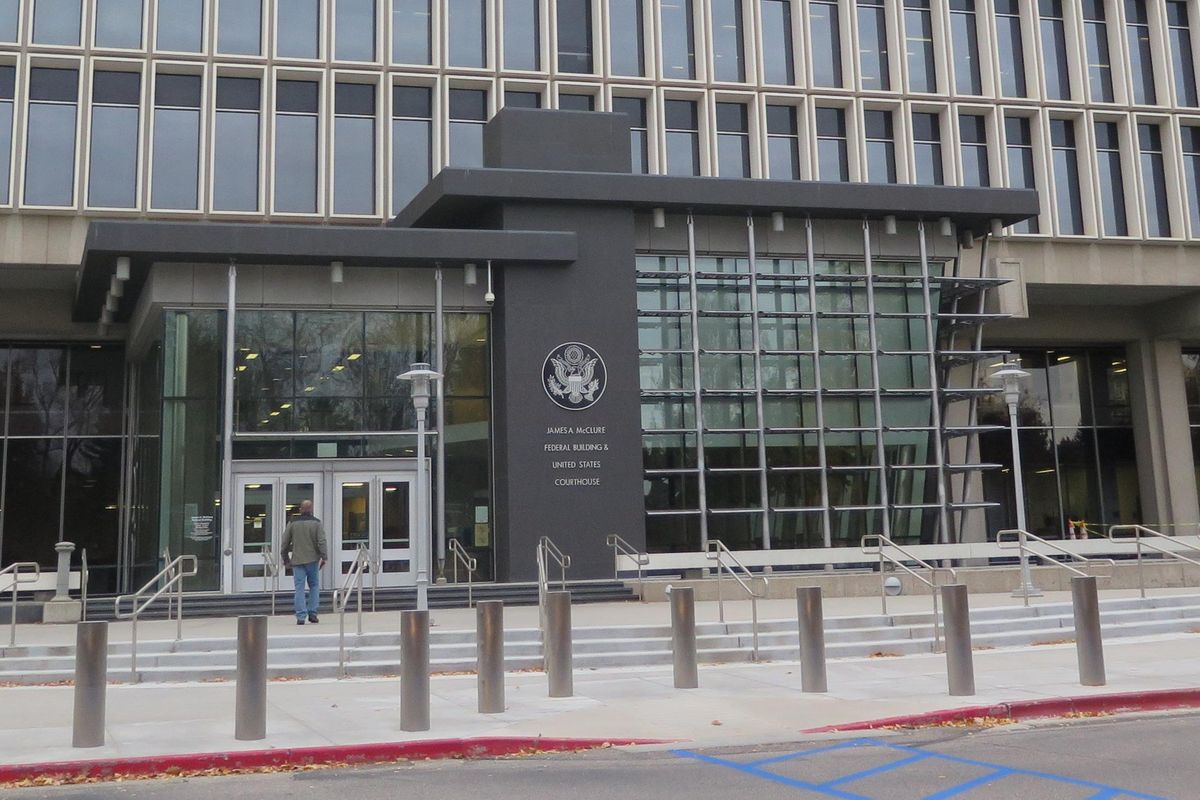Asarco, Union Pacific Railroad back in court over CdA Basin cleanup costs

BOISE – Eight years after paying out $482 million to fund cleanup from a century of mining contamination in North Idaho’s Silver Valley, the copper mining firm Asarco is back in court, demanding that Union Pacific Railroad pay it $130 million because it contends the railroad caused a big piece of the damage.
The railroad is furiously denying the claim. “This case is about history,” UP’s attorneys wrote in opening arguments filed with the court. “In this history, successful mining companies become wealthy, while managing their wastes by dumping them in the Coeur d’Alene River.”
They added, “Railroads did not generate the environmentally damaging mining waste, and the tailings mining companies gave or sold to some basin railroads for ballast would otherwise have been dumped in the river by the mining companies.”
Asarco LLC, a copper mining and smelting firm based in Arizona, settled its liabilities for the Coeur d’Alene Basin contamination as part of a 2009 bankruptcy settlement – but only on the condition that it could still go after other potentially responsible parties for a portion of the cost.
In particular, the lawsuit is focusing on rail lines that were constructed along the North Fork of the Coeur d’Alene River starting in 1907, with highly contaminated mine tailings used in the construction. When frequent flooding washed out the rail lines, more tailings were used to repair them. After catastrophic floods into the early 1930s, the damaged rail lines were abandoned.
The lawsuit also charges that railroads spread the mining contamination through the basin while transporting ores.
“These tailings and their metals constantly leached, eroded and washed out … from the North Fork, down the main stem of the Coeur d’Alene River, into Lake Coeur d’Alene and up through the Spokane River,” Asarco’s attorneys wrote in their opening arguments. “This pathway is corroborated by Asarco’s expert and unrefuted by Union Pacific.”
They estimated that Union Pacific is responsible for more than 2.5 million tons of contaminated tailings that washed downstream out of the North Fork.
Lodge, who presided over decades of litigation between the federal government, the Coeur d’Alene Tribe and mining companies over the contamination of the Coeur d’Alene Basin, told the assembled attorneys Monday morning, “This case, as well as its predecessor, has been briefed and rebriefed and motion after motion filed right up to the very last minute.”
Lodge said there are “certainly a lot of disputed facts in this case,” but said, “I’ve worked with this case long enough I pretty well know the ins and outs of it.”
In the original case, the government and the Coeur d’Alene Tribe sued five mining companies under the Superfund law to force them to help pay for cleaning up mining contamination throughout the Coeur d’Alene Basin; it was the biggest Superfund trial in history, with billions in damages at stake. Three companies settled, leaving the two largest ones, Asarco and Hecla. Then, after the government sought to hold the remaining two firms fully responsible for the damage under the doctrine of joint and several liability, Asarco settled as part of its 2009 bankruptcy, with the money going into a trust fund that’s both growing from investment earnings and funding major cleanup efforts in the basin. Hecla, which owns the Lucky Friday mine in Mullan, Idaho, settled in 2011 for $263.4 million plus interest.
Thomas Aldrich, Asarco’s retired former vice president for environmental affairs, told the court Monday that Asarco struggled in the early 2000s as copper prices hit alarming lows. “It would struggle to pay bills, to even meet payroll at times,” he said. After employees went on strike, he said, “We had no other choice other than to go into bankruptcy in August of 2005.”
The firm cooperated with federal environmental agencies in the bankruptcy, with settlements reached and trusts set up to cover multiple cleanup sites around the country, including the Silver Valley. But Aldrich said while the company agreed to pay $482 million for Coeur d’Alene Basin cleanup, “It was Asarco’s view that all those claims were overreaching and that they were way high.”
The firm contends that cost estimates for the cleanup of the basin have since dropped, leaving it paying an unfairly high share.
Founded in the 1880s as American Smelting and Refining Company, Asarco no longer has any employees in North Idaho; its current copper mining operations are in Arizona and Texas. Its parent company, Grupo Mexico, is one of the world’s largest copper producers.
Union Pacific, which traces its history to the building of the transcontinental railroad in the early 1860s, remains the oldest railroad company in continuous operation under its original name west of the Mississippi River. It operates in 23 states in the Western U.S. Its rail lines reached Wallace, Idaho, in the Silver Valley in 1899.
Union Pacific maintains that it’s already entered into settlements and consent orders regarding its role in the spread of mining contamination in the Silver Valley. That includes the railroad’s funding and maintenance of the 72-mile Trail of the Coeur d’Alenes rails-to-trails project, a Superfund cleanup project that capped the old, contaminated rail bed with asphalt, creating a scenic and popular bike path.
Lodge initially granted a motion from UP to dismiss the lawsuit, but Asarco appealed to the 9th Circuit U.S. Court of Appeals, which ruled that the settlements between the two firms at the time of Asarco’s bankruptcy still left some issues to be decided. Lodge then ordered the parties to focus on the North Fork, which wasn’t a part of earlier settlement and cleanup agreements in the basin.
The dispute has been a bitter one, with motions and challenges flying; UP objected to all the expert witnesses that Asarco wanted to call in the three-week trial that started Monday, but Lodge ruled they could testify.